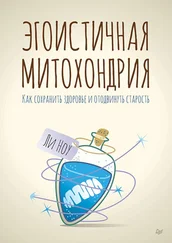Yang S. et al. ‘Estrogen increases eNOS and NOx release in human coronary artery endothelium.’ J Cardiovasc Pharmacol (2000): 36: 242–247.
‘The effects of estrogen or estrogen/progestin regimens on heart attack risk factors in post menopausal women. The Postmenopausal oestrogen Progesterone trial (PEPI trial).’ JAMA (1995): 273: 199–208. URL: https://www.ncbi.nlm.nih.gov/pubmed/7807658.
Golden, S. H. et al. ‘Endogenous postmenopausal hormones and carotid atherosclero-sis: a case-control study of the atherosclerosis risk in communities cohort.’ Am J Epidemiol (2002): 155: 437–445.
Miller, K. K. et al. ‘Low-dose transdermal testosterone augmentation therapy improves depression severity in women.’ CNS Spectr (2009): 14: 688–694.
Goldstat, R. et al. ‘Transdermal testosterone therapy improves well-being, mood and sexual function in premenopausal women.’ Menopause (2003): 10: 390–398.
Miller, K. K. et al. ‘Androgen deficiency: association with increased anxiety and depres-sion symptom severity in anorexia nervosa.’ J Clin Psychiatry (2007): 68: 959–965.
Hermans, E. J. et al. ‘A single administration of testosterone reduces fear-potentiated startle in humans.’ J Biol Psychiatry (2006): 59: 872–874.
Moffat, S. D. et al. ‘Free testosterone and risk for Alzheimer’s disease in older men.’ Neurology (2004): 62: 188–193.
Wisniewski, A. B. et al. ‘Evaluation of high dose oestrogen and high dose oestrogen plus methyl-testosterone treatment on cognitive task performance in postmenopausal women.’ Horm Res (2002): 58: 150–155.
Naing, S. et al. ‘Hypogonadism in chronic obstructive pulmonary disease.’ Curr Opin Pulm Med (2012): 18: 112–117.
Booji, A. et al. ‘Androgens as adjuvant treatment in postmenopausal female patients with rheumatoid arthritis.’ Ann Rheum Dis (1996): 55: 811–815.
Naoko, K. et al. ‘Testosterone suppresses anti-DNA antibody production in peripheral blood mononuclear cells from patients with systemic lupus erythematosus.’ Arthritis Rheum (1997): 40: 1703–1711.
Pope, Jr, H. G., et al. ‘Effects of supraphysiologic doses of testosterone on mood and aggression in normal men: a randomized controlled trial.’ Arch Gen Psychiatry (2000): 57 (2): 133–140.
Santora, L. J. et al. ‘Coronary calcification in bodybuilders using anabolic steroids.’ Prev Cardiol (2006): 9 (4): 198–201.
Copley, L. M. et al. ‘Consequences of use of anabolic androgenic steroids.’ Pediatr Clin North Am (2007): 54 (4): 677–690.
Sample, B. R. ‘Psychiatric effects and psychoactive substance use in anabolic-andro-genic steroid users.’ Clin J Sport Med (1996): 5 (1): 25–31.
Yofkova, I. et al. ‘A decreasing CD 4+/CD 8+ ratio after one month of treatment with Stanozolol in postmenopausal women.’ Steroids (1995): 60: 430–433.
Montgomery-Massingberd, H. ‘The Duchess’. The Spectator Archive, (29 September 1978), p. 22.
‘Physicians to Stop Injecting Silicone for Cosmetic Treatment of Wrinkles’. Food and Drug Administration press release (1992).
Kontis, T. C. et al. ‘The History of Injectable Facial Fillers.’ Facial Plast Surg (2009): 25: 67–72.
Greco, R. M. et al. ‘Hyaluronic Acid Stimulates Human Fibroblast Proliferation Within a Collagen Matrix.’ J Cell Physiol (1998): 177: 465–473.
Ke, C. et al. ‘Antioxidant Activity of Low Molecular Weight Hyaluronic Acid.’ Food Chem Toxicol (2011): 49: 2670–2675.
Chen, W. Y. and Abatangelo, G. ‘Functions of Hyaluronan in Wound Repair.’ Wound Repair Regen (1999): 7 (2): 79–89.
Cancer Research UK. URL: http://www.cancerresearchuk.org/health-profes-sional/cancer-statistics/statistics-by-cancer-type/skin-cancer#heading-Zero.
Armstrong, B. K. et al. ‘Case-control Study of Sun Exposure and Squamous Cell Carcinoma of the Skin.’ Int J Cancer (1998): 77: 347–353.
‘Global, Regional and National Life Expectancy, All-cause Mortality, and Cause-specific Mortality for 249 Causes of Death, 1980–2015: A Systematic Analysis for the Global Burden of Disease Study 2015.’ The Lancet (2016): 388: 1459–1544.
Johnston, H. ‘Reduction of Stratospheric Ozone by Nitrogen Oxide Catalysts from Supersonic Transport Exhaust.’ Science (6 August 1971): 173 (3996): 517–522. Molina, M. J., Rowland, F. S. ‘Stratospheric Sink for Chlorofluoromethanes: Chlorine Atom-catalysed Destruction of Ozone.’ Nature (1974): 249: 810–812.
‘Ozone and UV: Where Are We Now.’ Skin Cancer Foundation: 27 July 2009: http://www.skincancer.org/prevention/uva-and-uvb/ozone.
Godar, D. et al. ‘Cutaneous Malignant Melanoma Incidences Analyzed Worldwide by Sex, Age and Skin Type Over Personal Ultraviolet-B Dose Shows No Role for Sunburn but Implies One for Vitamin D 3.’ Dermato-Endocrinology (2017): Vol. 9, № 1: http://dx.doi.org/10.1080/19381980.2016.1267077.
Brash, D. et al. ‘A Role for Sunlight in Skin Cancer: UV–Induced P-53 Mutations in Squamous Cell Carcinoma.’ Proc Natl Acad Sci USA (1991): 88: 10124–10128.
Brash, D. E. ‘UV Signature Mutations.’ Photochem Photo-Biol: (2015): 91: 15–26: PMID:25354245: http://dx.doi.org/ 10.1111/php.12377.
Cooke, M. S. et al. ‘Oxidative DNA Damage: Mechanisms, Mutation and Disease.’ FASEB J (2003): 17 (10): 1195–1214: PMID:12832285: http://dx.doi.org/10.1096/fj.02–0752rev.
Lucas, A. et al. ‘Increased UVA Exposures and Decreased Cutaneous Vitamin D 3 Levels may be Responsible for the Increasing Incidence of Melanoma.’ Medical Hypotheses (2009): 72: 434–443.
Nair, R. et al. ‘Vitamin D: the ‘Sunshine’ Vitamin.’ J Pharmacol Pharmacother (2012): 3: 118–26.
Von Essen, M. R. et al. ‘Vitamin D Controls T-cell Antigen Receptor Signaling and Activation of Human T-cells.’ Nat Immunol (2010): 11: 344–349: PMID:20208539: http://dx.doi.org/10.1038/ni.1851.
Alshishtawy, M. M. ‘Vitamin D Deficiency. A Clandestine Endemic Disease is Veiled No More.’ SQUMJ (2012): 140–152.
Lucas, A. et al. ‘Increased UVA Exposures and Decreased Cutaneous Vitamin D 3 Levels may be Responsible for the Increasing Incidence of Melanoma.’ Medical Hypotheses (2009): 72: 434–443.
Daya-Grosjean, L. ‘Xeroderma Pigmentosum and Skin Cancer.’ Adv Exp Med Biol (2008): 637: 19–27.
Leibeling, D. et al. ‘Nucleotide Excision Repair and Cancer.’ J Mol Histol (2006): 37 (5–7): 225–238.
Weber, S. ‘Light-Driven Enzymatic Catalysis of DNA Repair: A Review of Recent Biophysical Studies on Photolyase.’ BBA (2005): Vol. 1707: 1–23.
Читать дальше
Конец ознакомительного отрывка
Купить книгу








![Дипак Чопра - Сила внутри тебя [Как «перезагрузить» свою иммунную систему и сохранить здоровье на всю жизнь] [litres]](/books/405248/dipak-chopra-sila-vnutri-tebya-kak-perezagruzit-thumb.webp)



